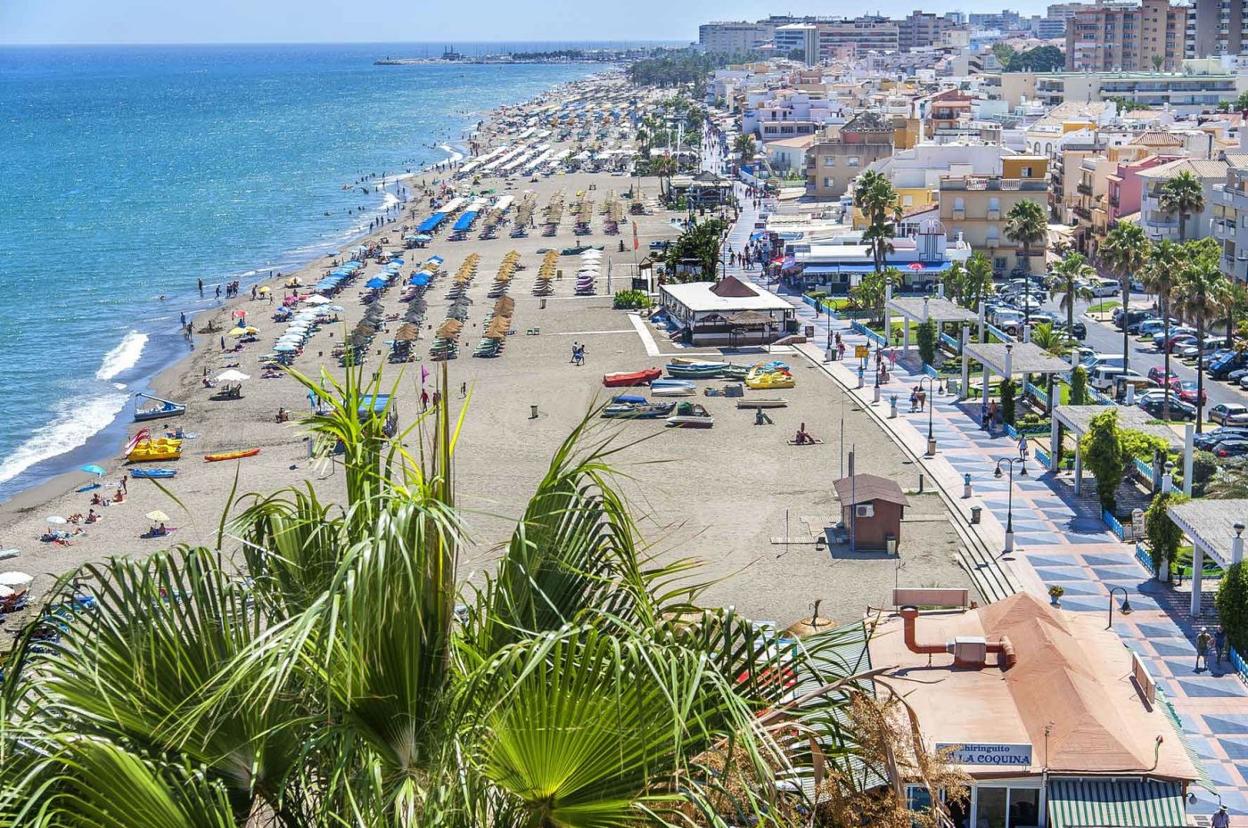Tales of towers and mills
TORREMOLINOS ·
The name of Torremolinos is linked to the splendour of its water mills and its vulnerability to attacks from the seaaLBERTO gÓMEZ
Thursday, 5 January 2023, 11:33
The explanation may seem simple -' torre' means tower and 'molinos' means mills - but a long history lies behind the name Torremolinos. The first time it was documented under that name was in 1748, on a map drawn up by politician Zenón de Somodevilla, Marqués de la Ensenada. The name came into being due to the large number of water mills at that time and the watchtower on the coast, but in fact the town has not always been called Torremolinos.
The first tangible evidence of human presence in this area dates back to the Neolithic period, about 5,000 years BC. In his book about watchtowers, Torres Almenaras, the academic and researcher Juan Temboury has said that a neolithic people originally from Mesopotamia found the area of coast where Torremolinos now stands to be the perfect place to settle.
The caves to live in, the good climate, the abundance of water and tremendous opportunities for hunting and fishing made the area an exceptional destination thousands of years before the tourism boom. The dating is supported by numerous caves which have been found and the remains of human skulls, bones, clay pots, axe heads and arrows which have been retrieved during excavations in the early 20th century. These caves, mostly caverns or natural galleries around the Punta de Torremolinos, an area now known as Castillo de Santa Clara, and at the Cuesta del Tajo hill, have revealed that the location met two basic necessities for the first settlers: there was shelter and water.
In his book on the history of Torremolinos, Carlos Blanco says that the most primitive settlers lived in huts on open ground and used the caves as occasional shelters and as burial sites. The water from the springs in the area has been essential in the history of Torremolinos, and it was during the period when the Moors occupied the region that the first industry came into being: they made use of the water that flowed from its source in the mountains down to the sea and built around 20 mills, using stone and wood for the construction.
Juan José Palop provides detailed information about the mills in his book Los Molinos de Torremolinos, including their origin, splendour and later decline. One, the Molino de Inca, has been restored now and the remains of several others can still be seen in the area. Some historians suspect that under Moorish rule, Torremolinos was known as Molina, as it appears as such on a 1696 map by Giacoma Rossi.
Despite the excellent natural conditions and the milling industry, for centuries the area suffered a serious problem: it was especially vulnerable from the sea and was therefore the victim of successive attacks by invaders and pirates. Due to this, around the year 1300 and during the Nasrid rule, a defensive tower was built at the end of what is now Calle San Miguel. In the ordinances of 1497 it was referred to as Torre de los Molinos, a first step towards the name the town would be known by in the future.
After the reconquest of the Kingdom of Granada by the Catholic Monarchs, and after they had taken Malaga, the province entered one of its biggest periods of economic and social transformation. The monarchs conceded ownership of the watchtower to Rodrigo de Pimentel, the fourth Count of Benavente, and it then became known as Torre de Pimentel or just Torre Pimentel.
At that time Torremolinos (then known as Molinos de la Torre) and Churriana were part of what is now Alhaurín de la Torre, although in 1502 the present municipality began to be governed by Malaga under the name Torres de Pimentel.
The first reference to Torremolinos as an urban centre on provincial maps was in 1748, as mentioned above, when the Marqués de la Ensenada marked it on his as 'T.Molinos'.
A census from 1769 shows that Torremolinos was part of Churriana for administrative purposes at that time and had a population of 106, nearly all of whom were linked to mills with names such as Inca, Moro, Malleo, Castillo, Torre, Bóveda, Nuevo, Cruz and Nogalera.
Torremolinos was an independent municipality from 1813 until 1924, when it went back to being part of Malaga. On 27 September 1988, after repeated demands from local residents and a long administrative battle, the Junta de Andalucía announced that it was, once again, a municipality in its own right.
